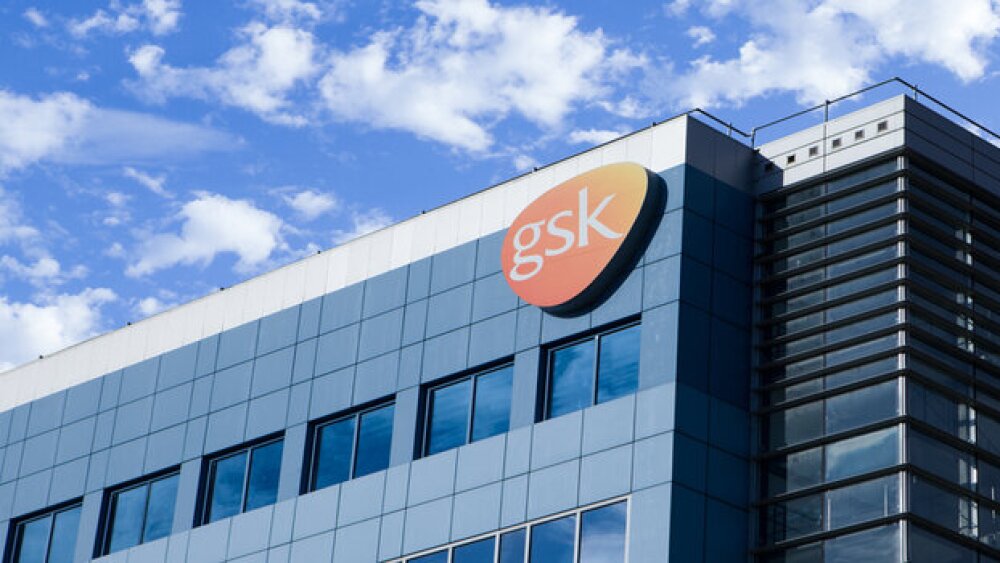Mereo BioPharma Group plc (NASDAQ: MREO, AIM: MPH), “Mereo” or the “Company,” today announced additional endpoint data from the Company’s Phase 2b dose-ranging “ASTEROID” clinical study of setrusumab (BPS-804), an anti-sclerostin antibody, in adults with Type I, III or IV osteogenesis imperfecta (“OI”).
LONDON and REDWOOD CITY, Calif., Jan. 14, 2020 (GLOBE NEWSWIRE) -- Mereo BioPharma Group plc (NASDAQ: MREO, AIM: MPH), “Mereo” or the “Company,” today announced additional endpoint data from the Company’s Phase 2b dose-ranging “ASTEROID” clinical study of setrusumab (BPS-804), an anti-sclerostin antibody, in adults with Type I, III or IV osteogenesis imperfecta (“OI”). These additional prespecified endpoint data build upon the Company’s 12-month topline data from the ASTEROID study announced in November 2019, which demonstrated a dose-dependent, statistically significant bone building effect of setrusumab at multiple anatomical sites in adult OI patients (irrespective of OI subtype). OI is a rare disorder characterized by fragile bones and reduced bone mass with no approved treatments.
“Based upon our review of the comprehensive data set from the Phase 2b ASTEROID study, these additional prespecified analyses support our previous conclusions that setrusumab is building bone at the lumbar spine and is increasing bone strength at multiple peripheral sites in adult OI patients,” said Dr. Alastair MacKinnon, Chief Medical Officer of Mereo. “We believe these additional endpoint data, together with the totality of the 12-month topline data and trend in fracture rate reduction in the high dose cohort, are fully supportive of moving forward with our planned pivotal trial in children with OI. To this end, we have made additional progress on the regulatory front, including a positive recent meeting with the European Medicines Agency (“EMA”), and are currently preparing for a Type B End-of-Phase 2 meeting with the FDA, scheduled for the first quarter of 2020.”
“Finite element analysis (“FEA”) is one of the best measures available to monitor bone strength in clinical studies, being sensitive to important changes in trabecular and cortical bone as well as overall bone structure. In OI patients given setrusumab for 12 months, the FEA technique was used to assess forearm (radius) bone strength at the beginning and end of the treatment period,” said Dr. Ken Poole, Reader in Metabolic Bone Disease at the University of Cambridge. “These new data are consistent with an effect of setrusumab at the high dose on improving radius bone strength as evidenced by a better ability to resist experimental deformation and improved failure load. There are no currently approved therapies for osteogenesis imperfecta, and treatment options are greatly needed.”
Additional Prespecified Efficacy Endpoint Results
Finite Element Analysis to Measure Bone Strength by Failure Load and Stiffness at the Radius (Second Primary Endpoint on a Hierarchical Basis)
The primary endpoint of the ASTEROID study was change in Trabecular Volumetric Bone Mineral Density (Tr. vBMD) of the radius (wrist) over baseline after 12 months of treatment as measured by High Resolution peripheral Quantitative Computed Tomography (HR-pQCT), followed by bone strength as calculated using FEA, a derived measurement of the mechanical strength gained by accumulated material in the bone.
Setrusumab demonstrated a dose dependent increase in both failure load and stiffness at the radius at 12 months, achieving statistical significance in the high dose cohort across both of these parameters (p=0.037 for failure load and p=0.022 for stiffness). FEA is based on the totality of the bone compartments (trabecular and cortical bone) and these data demonstrate that treatment with high dose setrusumab results in a significant increase in bone strength at the peripheral bone sites, consistent with the previously reported statistically significant increases in total vBMD as measured by HRpQCT (a secondary endpoint of the study).
Table 1: Increase in Failure Load at the radius determined by FEA and by dose cohort (all OI subtypes)
| Dose Cohort | Mean % Change in Failure Load at 12 months | P value at 12 months | |
| High (n=27) | +2.0% | p<0.037 | |
| Medium (n=20) | +1.1% | NS | |
| Low (n=22) | -0.06% | NS | |
Table 2: Increase in stiffness at the radius determined by FEA and by dose cohort (all OI subtypes)
| Dose Cohort | Mean % Change in Stiffness at 12 months | P value at 12 months | |
| High (n=27) | +2.2% | P<0.022 | |
| Medium (n=20) | +1.0% | NS | |
| Low (n=20) | +0.1% | NS | |
Trabecular Bone Score at the Lumbar Spine (Prespecified Exploratory Secondary Endpoint)
Trabecular bone score (TBS) is a gray-level texture index determined from patient lumbar spine dual-energy X-ray absorptiometry (DXA) scans that correlates with 3D parameters of trabecular bone architecture thought to help predict fracture. DXA is a well-established measurement tool of bone mineral density (cortical + trabecular bone).
Setrusumab demonstrated a statistically significant increase in TBS at both the high (p<0.001) and medium dose cohorts (p<0.001). Importantly, the spine is composed of both trabecular and cortical bone and these data demonstrate efficacy of setrusumab in the trabecular bone compartment at the lumbar spine which can be combined with the previously reported data from HRpQCT at the radius showing the impact of setrusumab on the cortical bone.
Table 3: Increase in TBS at the vertebral spine (all OI subtypes)
| Dose Cohort | Mean % Change in Stiffness at 12 months | P value at 12 months | |
| High (n=27) | 3.7% | P<0.001 | |
| Medium (n=20) | 3.2% | P<0.001 | |
| Low (n=22) | -0.47% | NS | |
As previously reported, topline 12-month safety results suggest setrusumab was safe and well tolerated in the ASTEROID study.
Regulatory Progress Update
As part of the PRIME pathway, Mereo has discussed the results of the Phase 2b ASTEROID study with the EMA. On the basis of the Phase 2b data, the EMA supports the initiation of the planned pivotal pediatric study in Europe on the basis of the previously approved pediatric investigational plan (PIP). This is based on a primary endpoint of fracture rate over a 12-month period in approximately 165 children aged 5 to <18 years old.
Mereo expects to conduct a Type B End-of-Phase 2 meeting with the U.S. Food and Drug Administration (FDA) in Q1 2020 to discuss the data from the Phase 2b ASTEROID study as well as the proposed pediatric pivotal study design. Mereo intends to announce the outcome of these discussions following the meeting.
About the Phase 2b ASTEROID Study
ASTEROID was a 12-month, randomized, double-blind, Phase 2b dose-finding study in 112 adults diagnosed with type I, III or IV Osteogenesis Imperfecta and a confirmed COL1A1/COL1A2 mutation who have fractured over the previous 5 years. ASTEROID was the largest, prospectively-designed, interventional clinical study to be performed in this patient group. The primary endpoint of the study was the change over baseline in Tr vBMD of the wrist at 12 months, followed by bone strength measured by Finite Element Analysts (hierarchical) assessed using HR-pQCT. Change from baseline at 6 and 12 months for areal BMD at the lumbar spine, as measured by DXA, was an important secondary endpoint. Additional secondary endpoints included HR-pQCT parameters (such as total vBMD), bone biomarkers, patient reported outcomes (PRO) and quality of life measures. Fracture data were also collected throughout the duration of the study, although the trial was not statistically powered for fractures.
About Osteogenesis Imperfecta
Osteogenesis Imperfects (OI) is a rare genetic disorder that is characterized by fragile bones and reduced bone mass resulting in bones that break easily, loose joints and weakened teeth. In severe cases patients may experience hundreds of fractures in a lifetime. In addition, people with OI often suffer muscle weakness, early hearing loss, fatigue, curved bones, scoliosis, respiratory problems and short stature, leading to significant impacts on overall health and quality of life. The majority of cases of OI (estimated at approximately 90%) are caused by a dominant mutation in a gene coding for type I collagen, a key component of healthy bone. Current treatment of OI is supportive, focusing on minimizing fractures and maximizing mobility, but to date, there are no EMA or FDA approved treatments.
About Setrusumab
Setrusumab is a fully humanized monoclonal antibody that inhibits sclerostin, a protein which inhibits the activity of bone-forming cells. The mechanism of action of setrusumab could be particularly well suited for the treatment of OI and has the potential to become the first approved treatment option that could reduce fractures and improve OI patients’ quality of life. In addition to evaluating setrusumab in adult OI patients, Mereo’s Paediatric Investigation Plan (PIP) has been approved by the European Medicines Agency (EMA) and a study design has been agreed for a pivotal registration trial in children, based on a primary endpoint of fracture rate over a 12-month period. The pivotal study will be conducted in approximately 165 children aged 5 to <18 years old with OI, initially in EU and Canada. Mereo continues to review the optimum ratio of potential partnering and equity income to finance the pivotal programme for setrusumab.
Mereo has obtained orphan drug designation in OI for setrusumab in both the United States and the EU, in February 2017 setrusumab was accepted into the EMA’s adaptive pathways program in the EU and, in November 2017 it was accepted into the EMA’s Priority Medicines scheme (PRIME).
About Mereo BioPharma
Mereo BioPharma is a biopharmaceutical company focused on the development and commercialization of innovative therapeutics that aim to improve outcomes for patients with rare diseases. Mereo’s strategy is to selectively acquire product candidates for rare diseases that have already received significant investment from pharmaceutical and large biotechnology companies and that have substantial preclinical, clinical and manufacturing data packages. Mereo’s lead rare disease product candidate, setrusumab, has completed a Phase 2b dose ranging study in adult patients with
osteogenesis imperfecta (“OI”). Mereo’s second lead product candidate, alvelestat, is being investigated in a Phase 2 proof-of-concept clinical trial in patients with alpha-1 antitrypsin deficiency (“AATD”) with topline data expected in mid-2020.
Mereo’s broader pipeline consists of four additional clinical-stage product candidates; acumapimod for the treatment of acute exacerbations of chronic obstructive pulmonary disease (“AECOPD”), leflutrozole for the treatment of hypogonadotropic hypogonadism (“HH”) in obese men, navicixizumab for the treatment of platinum-resistant ovarian cancer (recently licensed to Oncologie), and etigilimab for patients with advanced or metastatic solid tumors.
Forward-Looking Statements
This document contains “forward-looking statements.” All statements other than statements of historical fact contained in this presentation are forward-looking statements within the meaning of Section 27A of the United States Securities Act of 1933, as amended (the “Securities Act”), and Section 21E of the United States Securities Exchange Act of 1934, as amended (the “Exchange Act”). Forward-looking statements usually relate to future events and anticipated revenues, earnings, cash flows or other aspects of our operations or operating results. Forward-looking statements are often identified by the words “believe,” “expect,” “anticipate,” “plan,” “intend,” “foresee,” “should,” “would,” “could,” “may,” “estimate,” “outlook” and similar expressions, including the negative thereof. The absence of these words, however, does not mean that the statements are not forward-looking. These forward-looking statements are based on the Company’s current expectations, beliefs and assumptions concerning future developments and business conditions and their potential effect on the Company. While management believes that these forward-looking statements are reasonable as and when made, there can be no assurance that future developments affecting the Company will be those that it anticipates.
Factors that could cause actual results to differ materially from those in the forward-looking statements include risks relating to unanticipated costs, liabilities or delays; failure or delays in research and development programs, including expected timing of topline data for the Phase 2 proof-of-concept clinical trial evaluating the Company’s second lead product candidate, alvelestat, in patients with alpha-1 antitrypsin deficiency; the safety and efficacy of the Company’s product candidates and the likelihood of clinical data to be positive and of such product candidates to be approved by the applicable regulatory authorities; unanticipated changes relating to competitive factors in the Company’s industry; risks relating to the Company’s capitalization, resources and ownership structure, including as a result of circumstances affecting the Company’s former principal shareholder; the availability of sufficient resources for company operations and to conduct or continue planned clinical development programs, including the Company’s ability to continue as a going concern; changes in law or regulations affecting the Company.
All of the Company’s forward-looking statements involve risks and uncertainties (some of which are significant or beyond its control) and assumptions that could cause actual results to differ materially from the Company’s historical experience and its present expectations or projections. The foregoing factors and the other risks and uncertainties that affect the Company’s business, including those described in its Annual Report on Form 20-F, Reports on Form 6-K and other documents filed from time to time by the Company with the United States Securities and Exchange Commission (the “SEC”) and those described in other documents the Company may publish from time to time should be carefully considered. The Company wishes to caution you not to place undue reliance on any forward-looking statements, which speak only as of the date hereof. The Company undertakes no obligation to publicly update or revise any of our forward-looking statements after the date they are made, whether as a result of new information, future events or otherwise, except to the extent required by law.
Mereo BioPharma Contacts:
| Mereo | +44 (0)333 023 7300 |
| Denise Scots-Knight, Chief Executive Officer | |
| Richard Jones, Chief Financial Officer | |
| Cantor Fitzgerald Europe (Nominated Adviser and Broker to Mereo) | +44 (0)20 7894 7000 |
| Phil Davies | |
| Will Goode | |
| Burns McClellan (US Public Relations Adviser to Mereo) | |
| Lisa Burns | +01 (0) 212 213 0006 |
| Steve Klass | |
| FTI Consulting (UK Public Relations Adviser to Mereo) | |
| Simon Conway | |
| Ciara Martin | +44 (0)20 3727 1000 |
Investors:
investors@mereobiopharma.com





